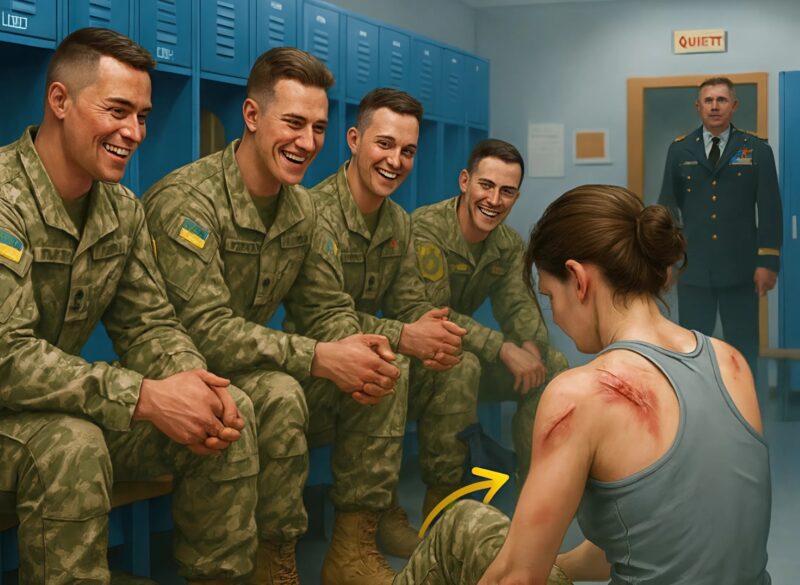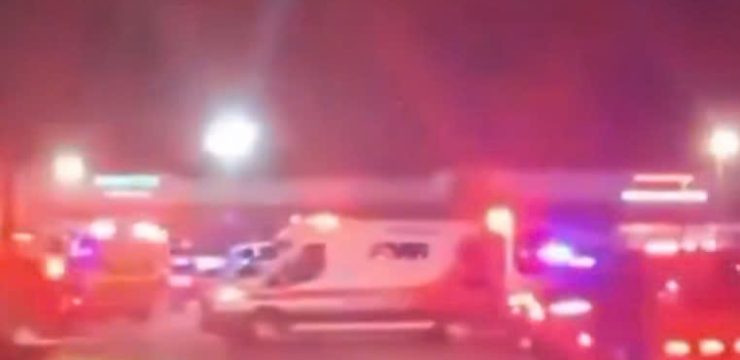Under the harsh glow of the precinct’s fluorescent lights, Detective Sarah Chen sat quietly, her eyes fixed on the photograph spread across her cluttered desk. It had been three days since Marcus Williams was found dead in his immaculate downtown apartment. What began as a simple suicide case had evolved into one of the most perplexing investigations of her career. Marcus, a successful investment banker with no known emotional or financial distress, hardly fit the profile of a man ready to end his life. The coroner’s report confirmed poisoning from a combination of prescription drugs. The apartment was locked from the inside, with no signs of forced entry. Everything seemed neat, even too neat. But one thing refused to sit right in Sarah’s mind—a fresh tattoo on Marcus’s shoulder that didn’t belong in the picture of his life.

The design was intricate and precise: a compass rose surrounded by delicate nautical symbols and coordinates, inked by a master artist. Yet Marcus’s medical file told a different story—he had a deep fear of needles, so severe that even blood tests required sedation. “You’ve been staring at that photo for twenty minutes,” said Detective Mike Rodriguez, her long-time partner, breaking the silence. “What’s throwing you off?” Without looking up, Sarah murmured, “The tattoo. It doesn’t make sense. He could barely handle a flu shot. There’s no way he sat through a tattoo session willingly.” Rodriguez shrugged. “Maybe it was a midlife crisis. Something symbolic before taking his life?” Sarah shook her head. “It’s too fresh—barely a week old. The redness and ointment residue prove it. This wasn’t voluntary.”
Sliding another photo closer, Sarah pointed to the coordinates engraved within the design. “These aren’t random. They lead somewhere.” Within minutes, she had mapped the coordinates. They pointed to a storage facility thirty miles outside the city—Unit 247. The rental records showed a fake name, “M. Compass,” paid entirely in cash. The physical description of the renter matched Marcus perfectly. Rodriguez frowned. “So our banker rents a storage unit under an alias, tattoos the coordinates on himself, and ends up dead? Doesn’t sound like suicide.” Sarah’s instincts agreed. She requested a warrant immediately.
By evening, she and the forensic team arrived at the facility. The manager, Gary Peterson, was cooperative but visibly nervous. “He said he needed it for family documents,” he recalled as they walked down the dim, echoing hallway. When the locksmith pried open the unit, Sarah’s flashlight sliced through the darkness—and froze. Inside was a secret office filled with computers, files, and a wall covered in photos and documents. In the center was something chilling: six detailed dossiers pinned side by side, Marcus among them. “This isn’t a suicide,” Sarah said under her breath. “This looks like a hit list.”
Each dossier contained surveillance photos, personal records, and vulnerability profiles. Marcus’s file was the most complete, marked with a bold red X. As the forensic team began to document the evidence, Sarah and Rodriguez cross-referenced the other names. What they uncovered shocked them: Marcus and the five others were involved in a massive financial fraud that siphoned over twelve million dollars from wealthy investors. The coordinates tattooed on his shoulder led to the evidence Marcus had secretly compiled—his insurance policy in case his partners betrayed him. But his plan had gone tragically wrong.
FBI Agent Lisa Park joined the case after discovering the tattoo ink was UV-reactive, visible only under black light. “This isn’t just art,” she said. “It’s coded communication. Someone with training in covert operations made this.” As evidence unfolded, it became clear Marcus had lived a double life—respected banker by day, criminal strategist by night. But before he could disappear with his share of the money, his partners found out.
The forensic report revealed disturbing details. Marcus had restraint marks on his wrists and ankles, and puncture wounds inconsistent with voluntary injections. “He didn’t take those drugs willingly,” Sarah realized. “They tortured him for information.” The tattoo, it turned out, had been forced on him—coordinates extracted through coercion. His killers had wanted to know where he hid incriminating proof of their crimes. After getting what they thought was the truth, they poisoned him and staged his death to look like a suicide.
But Marcus, even while under threat, had misled them. He gave them one location while concealing the most damaging evidence elsewhere. Luminol tests later uncovered faint traces of cleaned blood in his apartment—proof of a struggle. The injection site also confirmed that he couldn’t have self-administered the fatal dose. “He fought back,” Sarah said quietly. “They tried to erase it, but the scene still talks.”
Two weeks later, the task force arrested all five co-conspirators. The evidence Marcus left behind—audio recordings, forged documents, and offshore transfer logs—was overwhelming. Ironically, his paranoia and need for control had created the very trail that led police to his killers. “He built the case that convicted them,” Sarah told the district attorney. The stolen millions were recovered and returned to defrauded clients, but the damage to public trust was deep.
During trial, defense attorneys painted Marcus as the mastermind who manipulated his partners. But the storage evidence told another story: every one of them was equally complicit, driven by greed. A new witness emerged—the tattoo artist. Trembling as he took the stand, he revealed that he had been forced at gunpoint to ink Marcus. “He was terrified,” the artist said. “They told me if I refused, my family would suffer.” His testimony confirmed that Marcus had been tortured for the coordinates before being killed.
The case drew national attention, exposing the dark sophistication of modern white-collar crime. Financial fraud had evolved beyond spreadsheets—it now carried elements of espionage, manipulation, and psychological control. Sarah was commended by both her department and the FBI. At a law enforcement conference, she summarized the lesson of the case: “The tattoo was the thread that unraveled the whole web. Without it, the truth would have stayed buried.”
The aftermath reshaped how banks and agencies monitored internal misconduct. New security frameworks were established, focusing on transparency and ethical oversight. The “Marcus Williams Case” became a required case study for detectives and financial auditors alike. “The ink told the story,” Sarah often reminded new recruits. On her desk sat a framed photo of that compass tattoo—a haunting symbol of how a single overlooked detail can expose an entire network of deception.
Marcus Williams had tried to control every variable—his partners, his secrets, even his own narrative. But in the end, the very symbol meant to protect his hidden truth became the key that exposed it all. As Sarah closed her final report, she reflected on the irony that justice often writes its own ending. Sometimes, the evidence speaks louder than any confession—written not in words, but in ink that refuses to fade.





